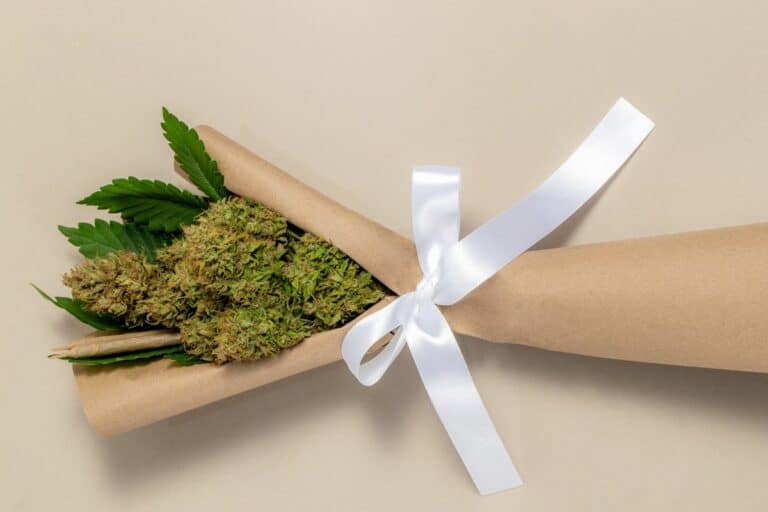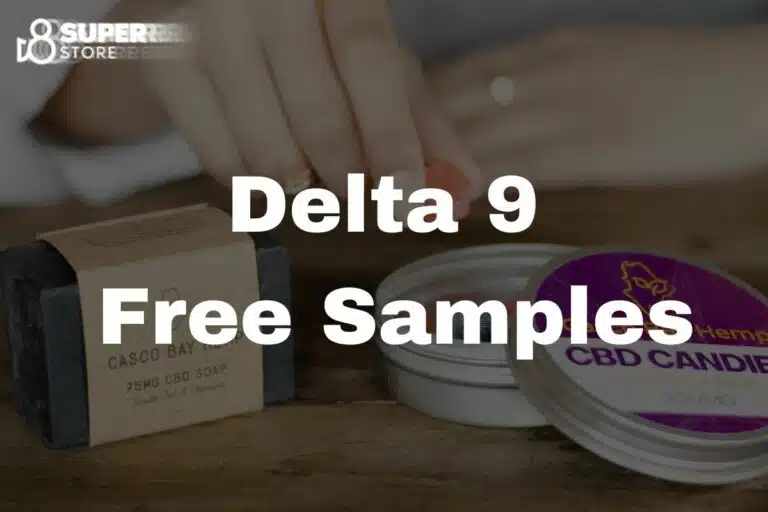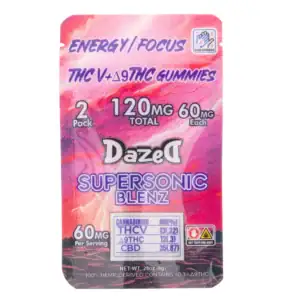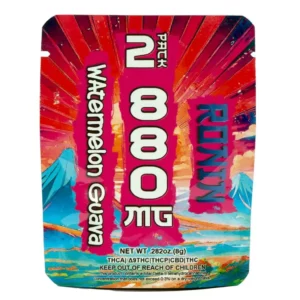Do Edible Gummies Expire? Understanding Their Shelf Life and Freshness
Gummy treats laced with cannabis or CBD are all the rage for folks wanting an easy, fun way to enjoy their buzz, be it for fun or health. But don’t forget, even these yummy snacks have an expiration date. The trick to keeping these gummies fresh and finding out why they turn yucky boils down to their components, their preservative content, and your storage methods. Figuring out what ruins them is key to ensure they stay as awesome as day one, dodging any unpleasant shockers.
- Understanding Edible Gummies
- Shelf Life and Expiration
- Preservation of Potency
- Proper Storage Techniques
- Impact of Ingredients and Packaging
- Knowing When to Consume
- Legal and Industry Considerations
- Consumer Education
- Frequently Asked Questions
- What is the shelf life of edible gummies?
- Can consuming expired edible gummies cause health issues?
- Is there a potency change in edible gummies after the expiration date?
- What are the best storage practices for extending the lifespan of edible gummies?
- Are there any specific signs to look for that indicate edible gummies have gone bad?
- How long can you safely consume edible gummies past their expiration date?
The expiration date of edible gummies acts as an indicator of their freshness. As time passes, the active compounds within the gummies, such as THC or CBD, may degrade, reducing their effectiveness. The texture and flavor of the gummies can also change as they age. Exposure to heat, light, and moisture can accelerate these processes, so storing your gummies properly is crucial to extending their shelf life. By paying attention to the storage instructions and expiration dates on the packaging, you can help preserve the quality of your edible gummies.
Keep in mind that consuming expired gummies is not just about the potential loss of potency, but also about food safety. Over time, edible gummies may become susceptible to the growth of mold or bacteria, particularly if they’ve been stored improperly. If your gummies look, smell, or taste off, it’s best to err on the side of caution and discard them. This is especially true for homemade gummies or those purchased from sources that don’t provide clear labeling and packaging.
Understanding Edible Gummies
In the diverse world of cannabis products, edibles stand out as a popular choice for their ease of use and variety. This section will help you navigate through what edibles are, their different types, and how consuming edibles differs from smoking cannabis.
What Are Edibles?
Edibles are food items made with cannabis flower or concentrates. Thanks to advancements in the cannabis industry, THC, CBD, and even CBN can be infused into a variety of foods and drinks. When you consume an edible, the active compounds are absorbed through your digestive system, leading to a longer onset of effects compared to inhalation.
- THC (Tetrahydrocannabinol): The principal psychoactive constituent that provides the ‘high’ feeling.
- CBD (Cannabidiol): Known for its potential therapeutic applications, without the psychoactive effects of THC.
- CBN (Cannabinol): Less common and typically appears in aged cannabis, with mild psychoactive properties.
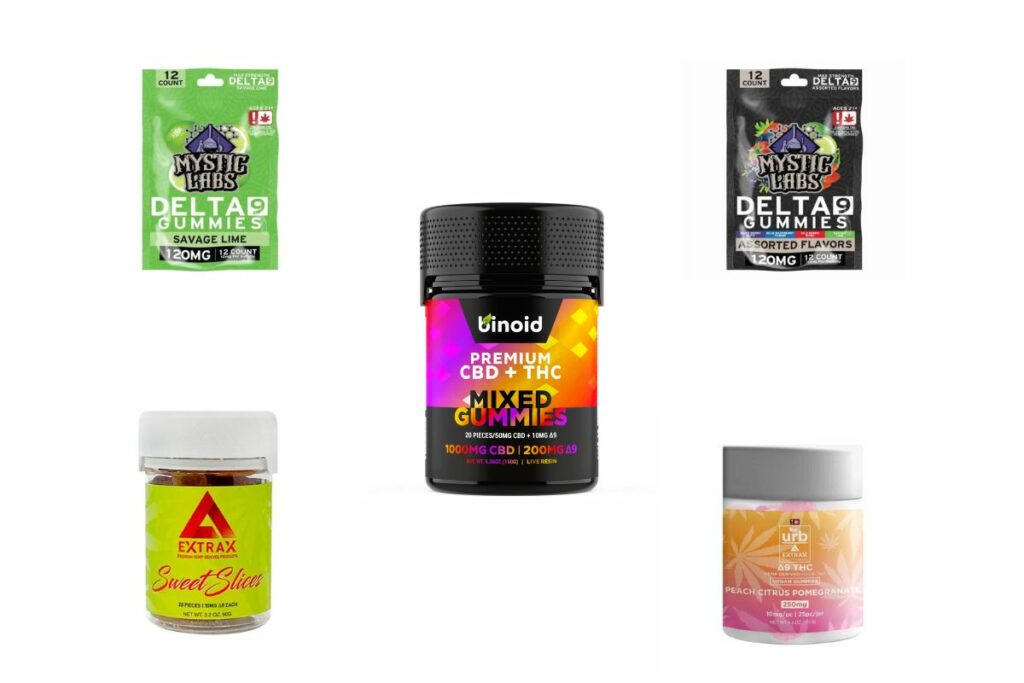
Types of Edibles
Edibles come in an assortment of forms, including:
- Cannabis gummies: Chewy candies infused with cannabis.
- Weed brownies: The classic baked good, rich with chocolate and cannabis.
- Cannabis-infused drinks: Beverages ranging from tea and coffee to sodas and alcoholic mixers.
A key point to note is that due to the variety of edibles, potency can vary greatly, requiring careful consideration of dosage.
Cannabis-Infused Foods Vs. Smoking
Cannabis-infused foods and smoking present different experiences primarily because of absorption. Smoking cannabis delivers cannabinoids directly to your bloodstream through your lungs, resulting in a rapid onset of effects. Conversely, when you eat cannabis-infused foods, they must pass through your digestive system, making the effects less immediate but typically more prolonged.
- Onset: Smoking can produce effects within minutes, whereas edibles may take 30 minutes to 2 hours.
- Duration: The impact of smoked cannabis might taper off within a couple of hours, whereas edibles can last 6 hours or more.
- Consistency: Inhaled cannabis effects can be more easily controlled, while edibles can produce variable results due to factors like individual metabolism and the exact composition of the food product.
Shelf Life and Expiration

Understanding the shelf life and expiration of edible gummies is crucial to ensure you consume them when they are most potent and safe. These factors are influenced by the storage environment and ingredients used.
Factors Affecting Shelf Life
Several factors can impact the shelf life of edible gummies. Ingredients with long shelf lives typically extend the overall longevity of the product. However, storage conditions such as temperature, humidity, and light exposure can accelerate degradation. Preservatives may be added to maintain freshness, but even with these, gummies can expire.
- Temperature: Keep gummies in a cool, dark place to prevent melting or degradation of active compounds.
- Light: Exposure to light can degrade certain ingredients, reducing potency and safety.
- Air: Oxygen can deteriorate gummies; airtight packaging is essential.
By controlling these elements, you can help ensure your edibles remain potent and safe for consumption up to their expiration date.
Typical Shelf Lives for Different Edibles
The shelf life of edibles can differ significantly based on their formulation. For instance:
| Type of Edible | Typical Shelf Life |
| Gummy candies | 6-12 months |
| Chocolate-based edibles | 1-2 years |
| Baked goods | 2-6 months |
Chewable gel tablets, like edible gummies, generally have a shorter shelf life than chocolate-based edibles and should be consumed within the best-before dates provided.
Safety and Expired Edibles
Consuming expired edibles can lead to compromised safety and a decrease in potency. Although gummies past their expiration may not necessarily be harmful, their freshness and effectiveness might be diminished. Always check the expiration date on packaging and when in doubt, it’s best to err on the side of caution and avoid consumption. Gummies showing obvious signs of spoilage such as a change in color, smell, or texture should be discarded.
- Potency: Over time, the active compounds in edibles can degrade, reducing their effectiveness.
- Safety: Always inspect your edibles for signs of spoilage such as mold or off-odors before use.
Preservation of Potency
When it comes to preserving the potency of edible gummies, understanding the degradation of cannabinoids and how to maintain potency over time is crucial. Proper storage and care are key components in ensuring that your edible gummies remain as effective as when they were first purchased.
Degradation of Cannabinoids
Cannabinoids like THC, CBD, and CBN are prone to degradation when exposed to certain environmental factors such as light, heat, and oxygen. This degradation can lead to a decrease in the potency and effectiveness of your gummies. Terpenes, the compounds that give cannabis its aroma and flavor, can also degrade under similar conditions, affecting not just the potency but the overall sensory experience of the edibles.
Maintaining Potency Over Time
To keep your edible gummies potent over time, you should store them in a cool, dark place away from direct sunlight. This practice helps to preserve the integrity of the cannabinoids and the terpenes. Using preservatives in the gummies can also extend their lifespan by slowing down the natural degradation process. It’s important to understand that even with proper storage, gummies can still lose potency over longer periods, as the cannabinoids continue to break down, albeit more slowly.
If the gummies are made through a cannabis infusion or distillate, the initial quality of the extraction can also influence how well the cannabinoids retain their potency. High-quality, stable extracts will typically last longer and degrade more slowly. Always check for an expiration date on the packaging for the manufacturer’s guidance on shelf life.
Proper Storage Techniques
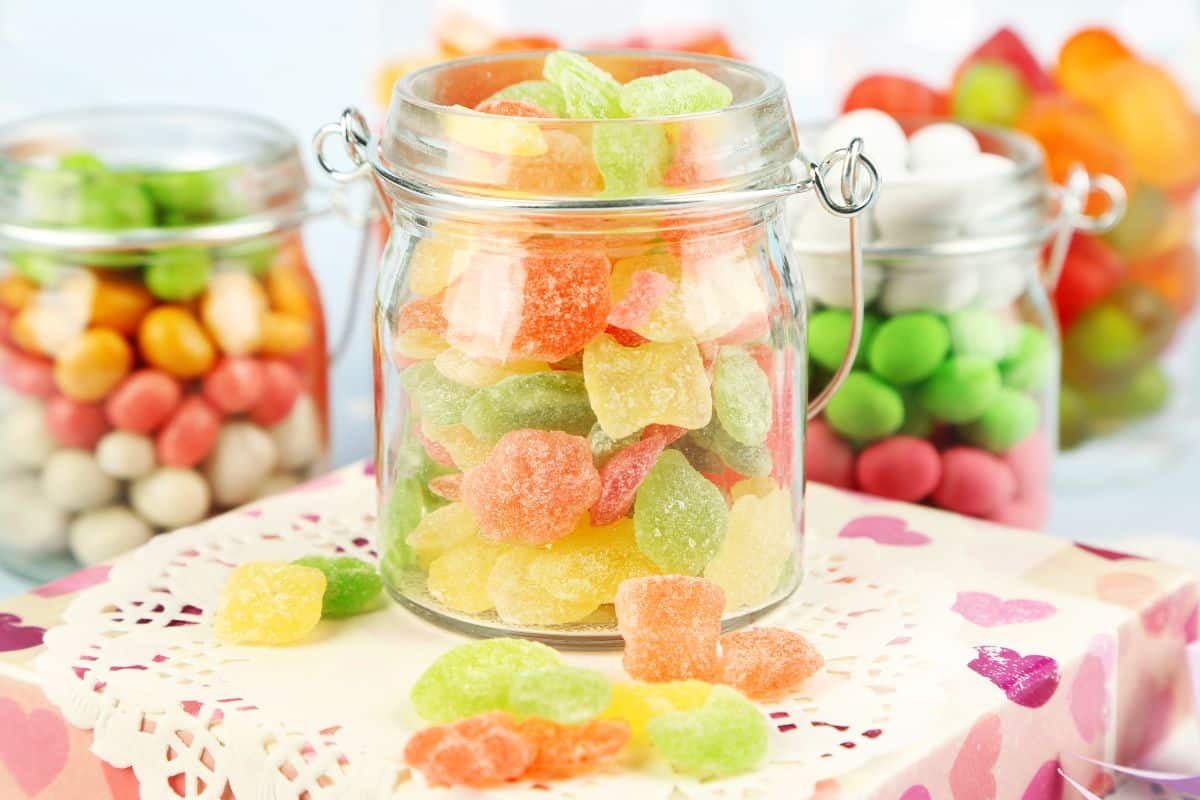
Proper storage of edible gummies is critical for maintaining their texture, potency, and safety. By understanding the ideal conditions and common mistakes, you can ensure your gummies stay fresh and enjoyable for as long as possible.
Ideal Storage Conditions
When storing edible gummies, aim for a cool, dry, dark place to preserve their quality. Refrigeration can be beneficial, especially for longer-term storage, as it helps maintain a consistent temperature and reduces the risk of spoilage. The ideal storage temperature for gummies is between 55-70°F (13-21°C). It’s also essential to minimize exposure to light and humidity as these factors can degrade the gummies. Airtight containers or jars are perfect for keeping out unwanted air and moisture. If you opt for freezing, ensure the gummies are wrapped in parchment paper before placing them in an airtight container to prevent them from sticking together and absorbing freezer odors.
- Temperature: Keep at 55-70°F (13-21°C)
- Humidity Levels: Low – use desiccants if necessary
- Light: Minimal – store in opaque containers if possible
- Container: Airtight – to prevent oxidation and moisture intrusion
Common Storage Mistakes
Avoid exposing your gummies to heat and direct sunlight as these will cause them to melt and lose their texture. Do not store edible gummies in a place with high humidity, which can lead to mold growth. It’s a common mistake to leave gummies out in the open where air and light can quickly degrade them. Likewise, improperly sealing gummies in containers that aren’t airtight will allow air to enter, making them stale. Refrain from storing gummies near strong odors or spices, as they can absorb these flavors, altering their intended taste.
- Heat & Sunlight: Avoid to prevent melting and texture loss
- Non-Airtight Packaging: Leads to stale gummies and potency loss
- Moist Environments: Increase risk of mold and spoilage
- Freezer without Protection: Can cause freezer burn and odor absorption
Impact of Ingredients and Packaging
When assessing the longevity of edible gummies, the composition of ingredients and the nature of packaging play pivotal roles. These factors determine how well the gummies resist spoilage and retain their desired qualities over time.
How Ingredients Affect Edible Shelf Life
The shelf life of edible gummies greatly depends on their ingredients. Preservatives can extend the durability of gummies by inhibiting microbial growth. For example, gummies containing natural preservatives like citric acid may last longer than those without. In contrast, gummies packed with real fruit juice or high moisture content might have a shorter life span due to faster degradation.
Baked goods like cookies and brownies typically include perishable items such as dairy or eggs, making them more susceptible to spoilage than gummies or hard candies. On the other hand, candies with high sugar content may effectively resist bacteria due to sugar’s preservative properties. Similarly, thc or cbd infused cannabis products—including beverages—pay heed to the ratio of active compounds to carrier substances, which can impact stability and potency over time.
Role of Packaging in Preservation
The integrity and safety of edible gummies are heavily reliant on their packaging. Airtight and moisture-resistant containers can significantly extend shelf life by preventing exposure to air, humidity, and contaminants. Childproof packaging, as demanded by regulations in places like Colorado, not only ensures safety for children but can also help in maintaining the quality of edible gummies by limiting air exposure. Another consideration is packaging transparency against light exposure, which can degrade certain ingredients, affecting both the quality and efficacy of the product.
Knowing When to Consume
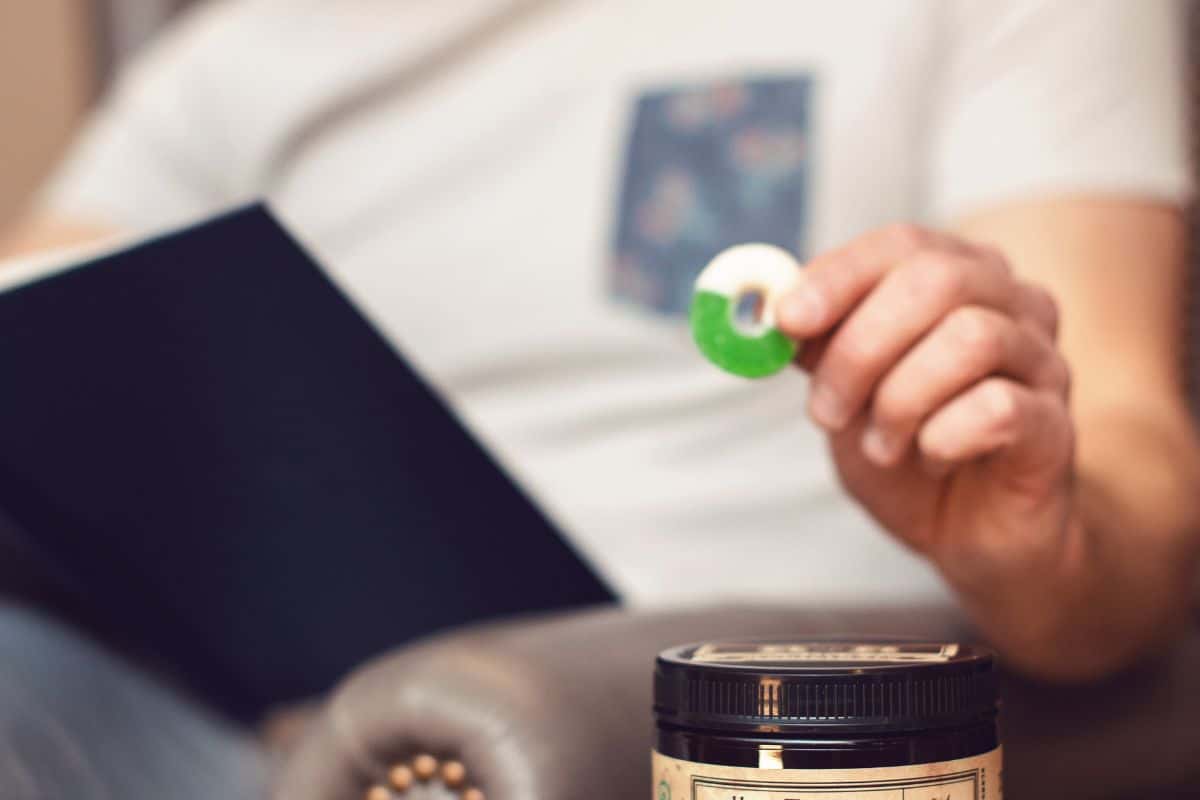
When it comes to edible gummies, understanding the optimal time frame for consumption is crucial to maintain both their quality and effectiveness. The two main aspects to consider are the expiration dates provided by manufacturers and the sensory indicators that signal whether the gummies are still fresh.
Reading Expiration Dates
Edible gummies come with expiration dates that offer a guideline for when they should be consumed. This date is determined through research and testing to ensure that up until this point, the texture, flavors, and effects of the gummies remain as potent as intended. Always check the packaging for the expiration date, sometimes displayed as a ‘best by’ or ‘use by’ date, and plan to consume the gummies before this date.
- Look for: ‘Expires on’, ‘Best by’, or ‘Use by’ followed by a date.
- Location: Often found on the side or bottom of the package.
Sensory Indicators of Freshness
Apart from the labeled expiration date, your own senses are valuable tools for assessing the freshness. The texture and flavors of gummies can deteriorate over time, even before the expiration date, especially if stored improperly.
- Texture: Fresh gummies should be soft and chewy; any noticeable hardening or change in texture can indicate they’re past their prime.
- Flavors: Sniff and taste a small piece of the gummy. If the flavors seem off or have lessened dramatically in intensity, the gummies might not be as potent.
By paying attention to these indicators, you’ll be better equipped to determine the ideal time to enjoy your edible gummies.
Legal and Industry Considerations
In the evolving landscape of the cannabis industry, you, as a manufacturer, researcher, or dispensary owner, need to be acutely aware of the regulations concerning product expiration, as well as the ongoing research and development efforts that are shaping the industry.
Regulations on Edible Expiry Information
The legalization of cannabis has led to stringent regulations regarding the packaging and labeling of edible products like gummies. You must include critical information such as the production date, expiration date, and serving size. For example, in Colorado, regulations mandate that this information is clear to ensure consumer safety. This ensures that consumers are aware of a product’s shelf life and consume it while it remains effective and safe, avoiding potential issues such as nausea caused by expired products.
Research and Development in Cannabis Industry
Continued research and development are vital for the progress of the cannabis industry. Manufacturers are constantly working to improve the longevity and safety of their edibles. This research is particularly important as the industry seeks ways to ensure consistent potency and quality of their products, a challenge with edible cannabis. If you’re involved in the creation of cannabis edibles, staying on top of the latest scientific findings not only helps you adhere to legal standards but also positions you as a leader in a competitive market.
Consumer Education
When engaging with cannabis edibles such as gummy bears, it’s crucial for you to understand proper storage and the intricacies surrounding their dosage and effects. This will ensure the longevity of the product’s potency and safety.
Learning to Store Edibles
Edibles, including gummy bears, need to be stored correctly to maintain their freshness and potency. Place your edible gummies in a cool, dark environment, preferably in an airtight container to prevent exposure to air, light, and heat, all of which can degrade the cannabis infusion.
- Temperature: Store below 70°F (21°C) to prevent melting.
- Light: Keep in opaque containers away from direct sunlight.
- Air: Minimize exposure to air to reduce the risk of contamination.
For homemade edibles, note the food ingredient’s expiration date as a guideline for how long your edibles will last, but remember that the cannabis component may remain potent longer than the food ingredient.
Understanding Dosages and Effects
Unpacking the impact of edibles requires a comprehension of the recommended doses and their ensuing effects. Since edibles can take longer to take effect—sometimes up to two hours—it’s important to wait before consuming additional amounts to avoid unintended, potent effects.
- Start Low: Begin with a small dose, especially if you’re new to edibles.
- Wait: Allow time to feel the full effects before considering more.
Recognize that cannabis products like edibles have a delayed onset of effects compared to smoking or vaping cannabis. This is due to the body’s process of digesting and then metabolizing the cannabis-infused product, leading to a different and sometimes more intense experience. Always consume with caution and informed awareness.
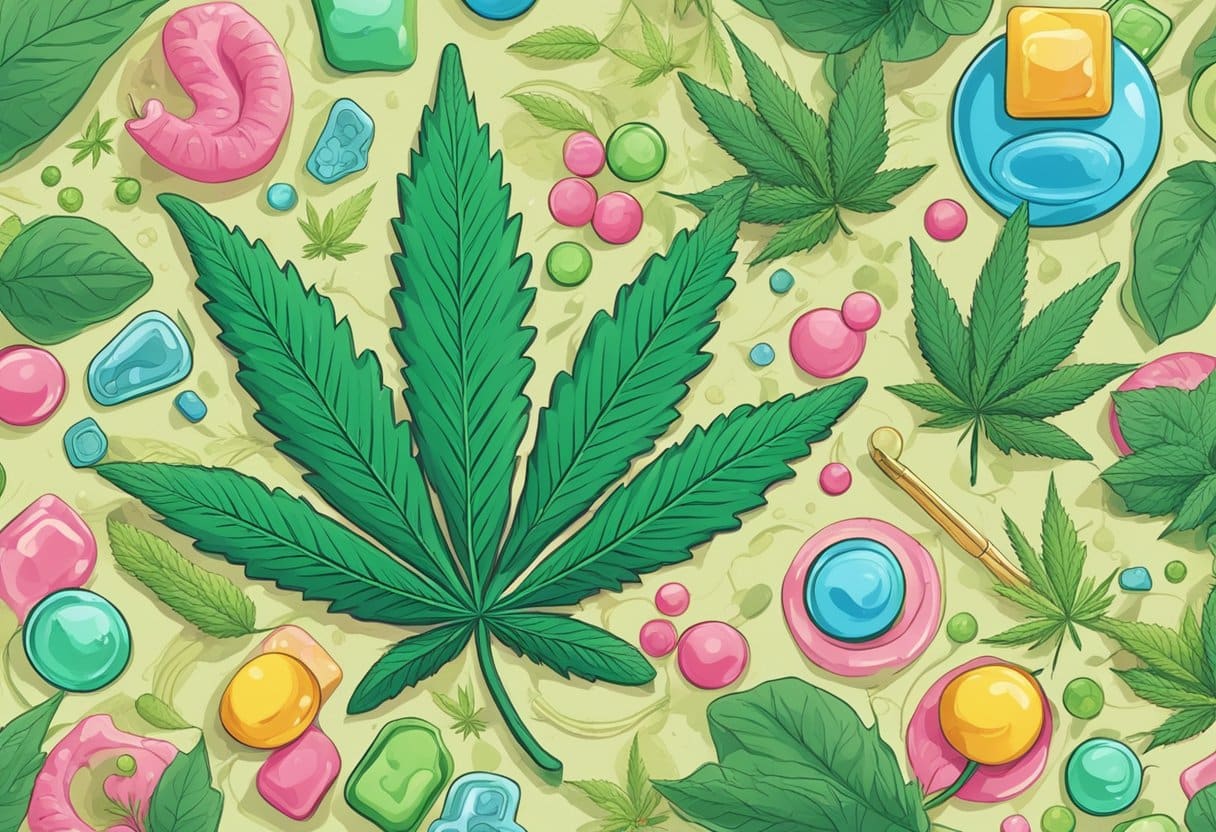
Frequently Asked Questions
When considering the consumption of edible gummies, it’s crucial to understand their shelf life, potential health risks of expired products, changes in potency, and proper storage methods to ensure safety and quality.
What is the shelf life of edible gummies?
The shelf life of edible gummies can vary, but typically they last about 6 to 12 months. Proper storage can play a significant role in maximizing their longevity. For instance, storing them in a cool, dry place can help preserve their quality, as highlighted by preservation techniques.
Can consuming expired edible gummies cause health issues?
Consuming expired edible gummies may lead to digestive discomfort or foodborne illness, although the severity can depend on how far past their expiration date they are and how they have been stored.
Is there a potency change in edible gummies after the expiration date?
Yes, there can be a change in potency. Over time, active ingredients in edible gummies may degrade, leading to a weaker effect than when they were fresh. This degradation can impact both the intended effects and the overall flavor of the gummies.
What are the best storage practices for extending the lifespan of edible gummies?
To extend the lifespan of edible gummies, keep them in an airtight container and store them away from heat, light, and moisture. Reducing exposure to these elements can help maintain their quality and extend their shelf life.
Are there any specific signs to look for that indicate edible gummies have gone bad?
Look for changes in texture, color, or smell. Hardened or extremely sticky gummies, discoloration, or an off odor are tell-tale signs that your edible gummies may have gone bad and should not be consumed.
How long can you safely consume edible gummies past their expiration date?
It is generally advised to adhere to the expiration date on the packaging. If edible gummies appear unaltered by factors such as color or odor and are only slightly past their expiration, they might still be safe to consume, but they could have diminished potency or flavor.




